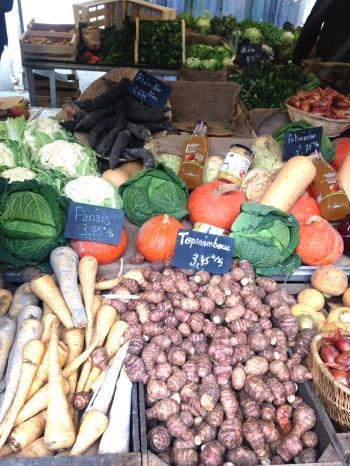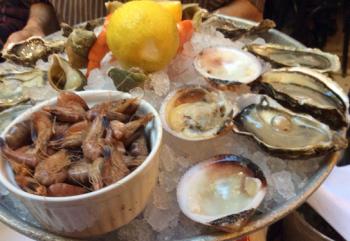The bright side of winter in Paris
This item appears on page 12 of the June 2020 issue.
Like everyone else, my husband, Richard, and I have vacationed in Paris in warm weather, but after one trip some years ago and another Feb. 7-27, 2020, we became convinced that winter is a better time to visit. It can be chilly but not as cold as New York, and it can be rainy but only intermittently.
First, fewer tourists are about. The queues in front of the Louvre are shorter, and at opening time they’re hardly existent. Montmartre and the Place du Tertre aren’t crowded but still have a nice bustle, and you’ll surely be asked by an “artist” if you’re a movie star. At restaurants, you’re not automatically handed a menu in English.
Next, the glow and sparkle of the Eiffel Tower every hour on the hour after dark will occur earlier. No need to wait until 10 p.m.!
Most of all, we enjoy the food more in winter. When it’s hot, with crowds and inadequate (or nonexistent) air-conditioning, who wants to eat heartily? Well, we do, but we’re not able to do so as comfortably as on a cold day, when you can really dig into a pot-au-feu (beef stew), potée (boiled winter vegetables and meat, often pork), cassoulet, boeuf bourguignon (beef Burgundy) or a choucroute garnie (sauerkraut and sausage).
Or you can have the Auvergnat specialties of sausage or meat with a big helping of aligot (mashed potatoes with cheese and garlic) or truffade (sliced potatoes with cheese and garlic). This food will keep you warm!
Also better in winter are soupe à l’oignon (onion soup), steak tartare, raw oysters or, my favorite, a plateau de fruits de mer, a selection of shellfish served on a bed of ice. Sure, you can have these dishes year-round, but they’re safer and more traditionally eaten in winter.
Winter is also the time for gibier (game). Many restaurants will usually have sanglier (wild boar) in a stew. One of our favorite restaurants, À la Biche au Bois (45 avenue Ledru-Rollin, Paris 12), announces game season in late September or October, then, periodically through the winter, features what has been caught.
There might be chevreuil (venison) or lapin and lièvre (rabbit and hare) or caille (quail), perdrix (partridge) or faisan (pheasant). You’ll have to ask what has come in and then choose among their preparations. It’s deliciously agonizing but only in winter; there is no game on the summer menu.
Outside, street vendors offer tantalizing cornets of hot roast chestnuts to keep your hands warm while walking. And stopping on the heated terrace of a café for a Viennese hot chocolate is so much better when it’s cold outside.
In the markets, food abounds in all seasons, but it’s only in winter that you’ll find topinambaux (Jerusalem artichokes, or sunchokes) and crosnes (Chinese artichokes). They’re nice alternatives to potatoes, although crosnes are now hard to find and rather expensive.
Of course, we miss the flowers in the parks, sunny days in the Sainte-Chapelle and the huge sprawl of café life out in the open, but we find the compensations more than enough to make winter a perfect time to go to Paris.
KITTY CHEN DEAN
New York, NY



